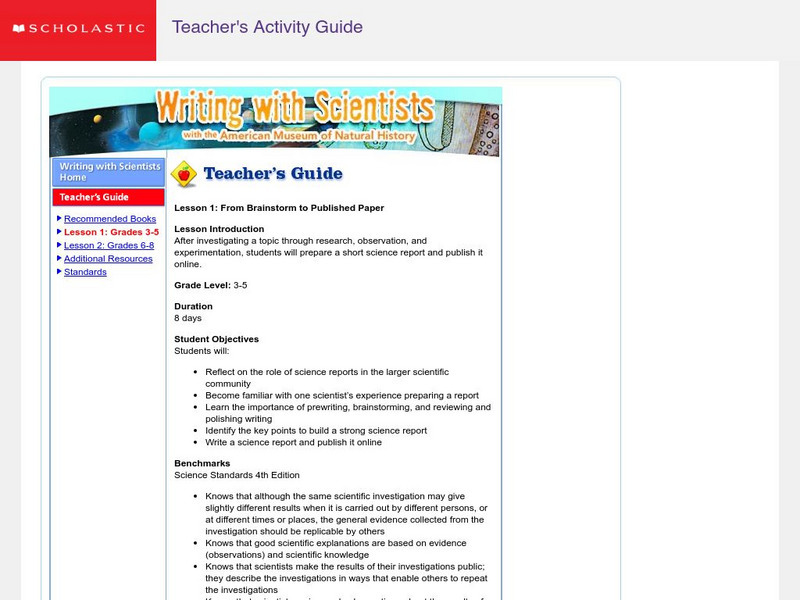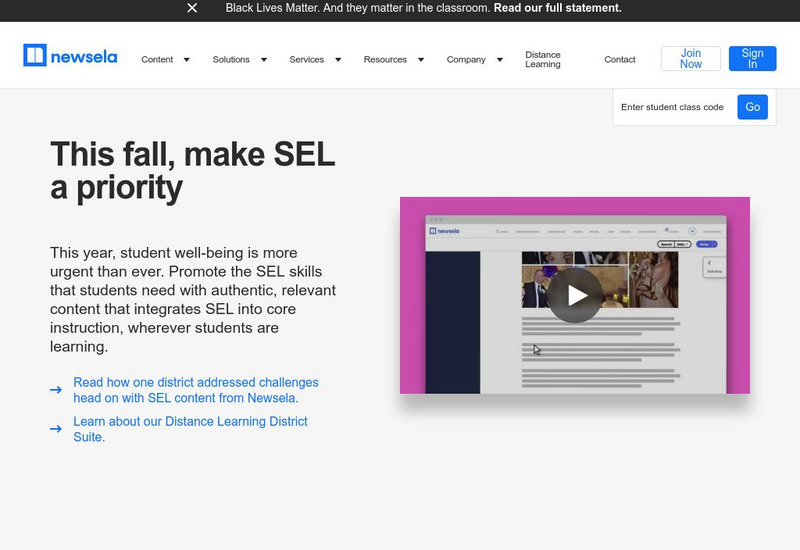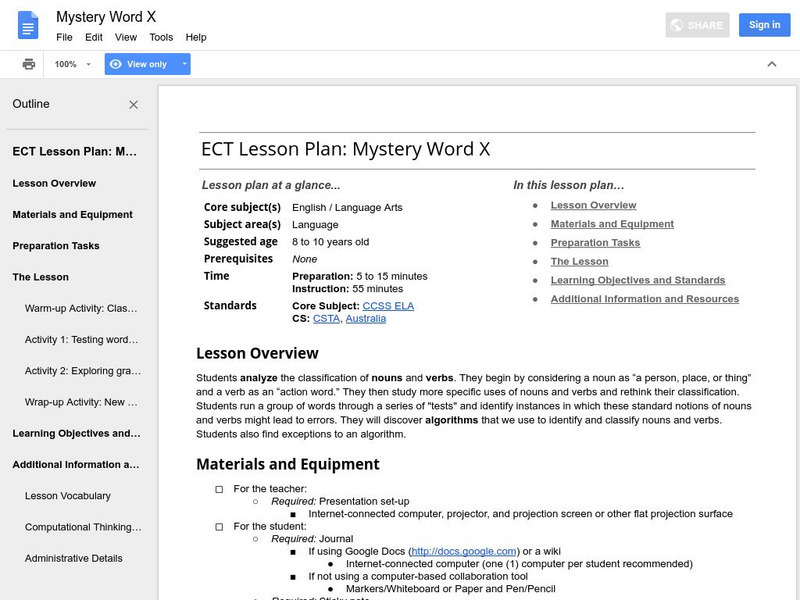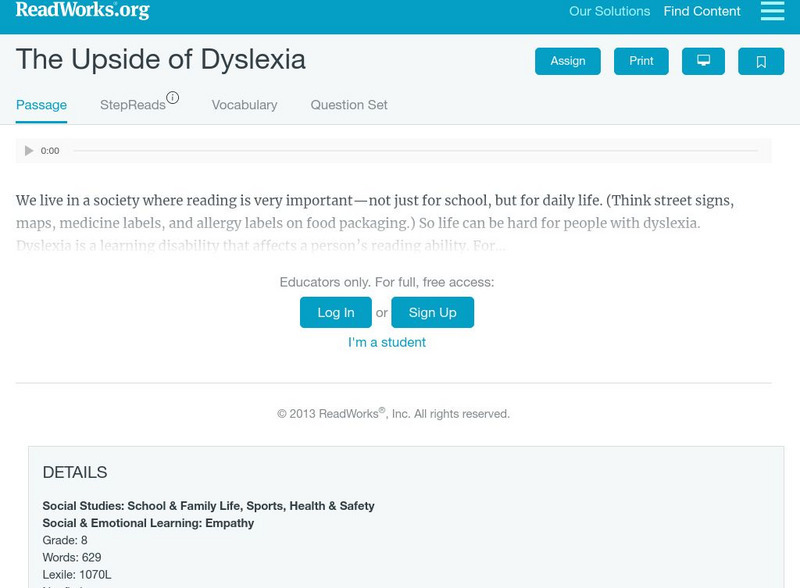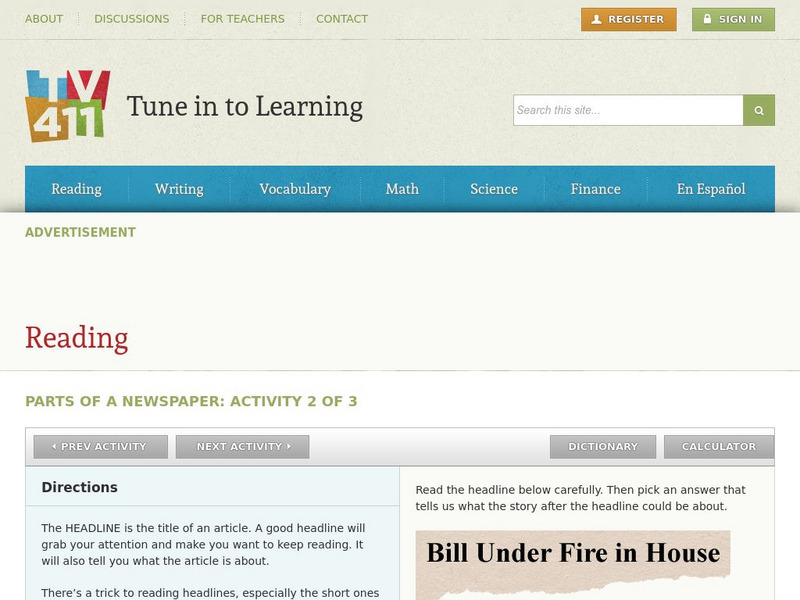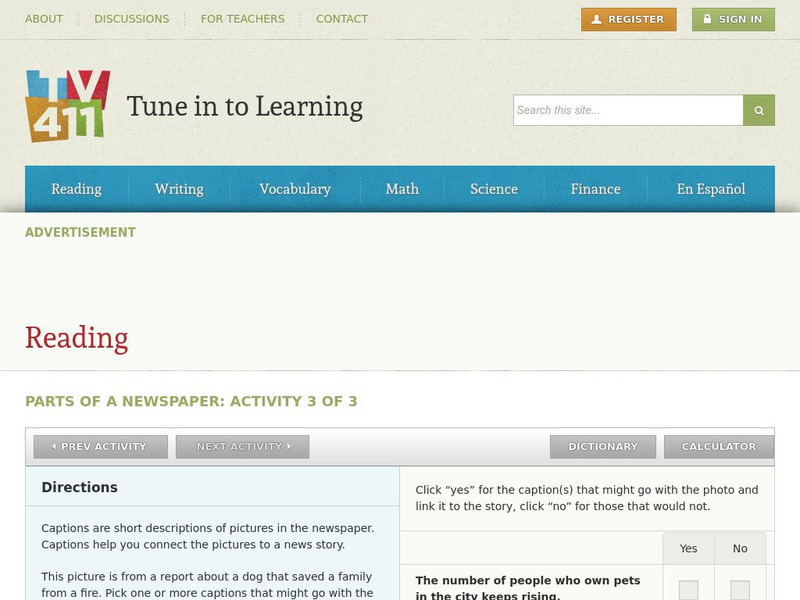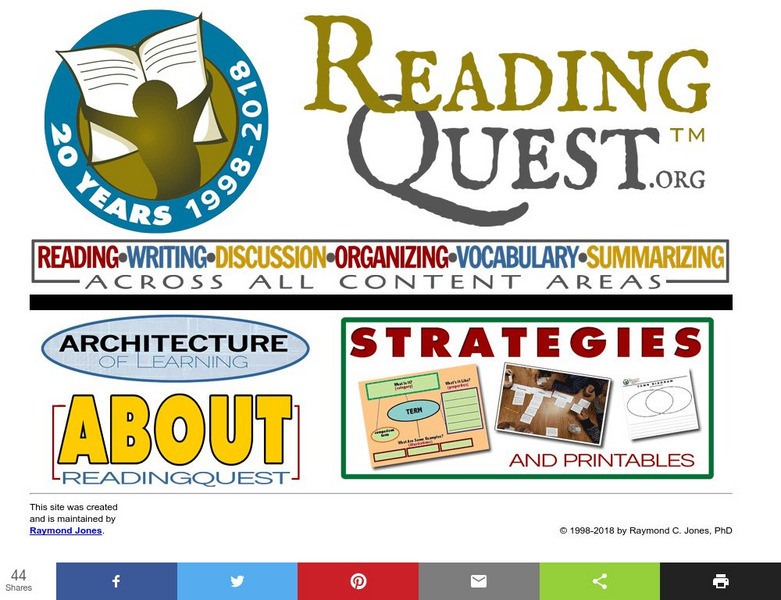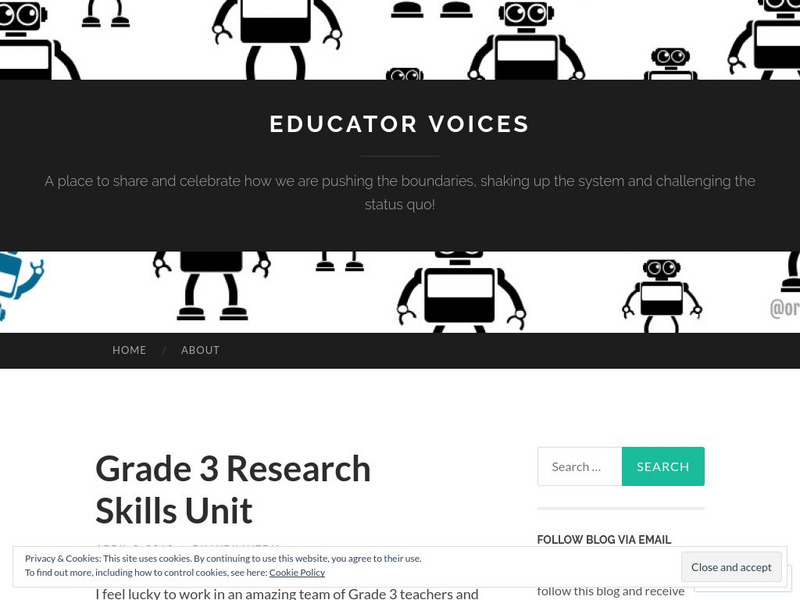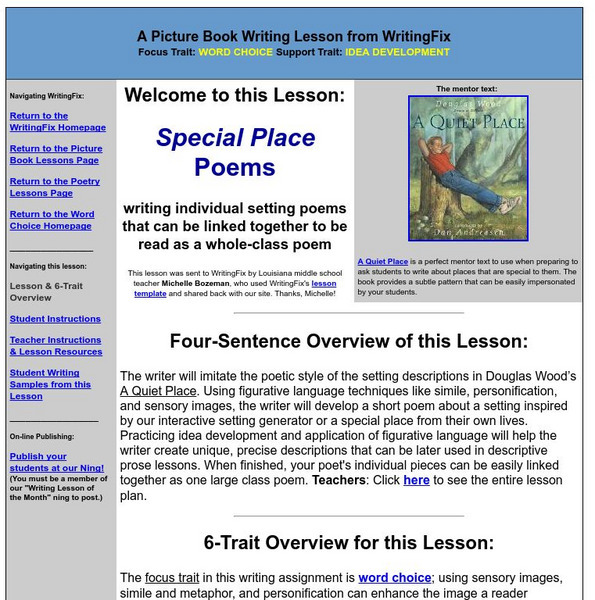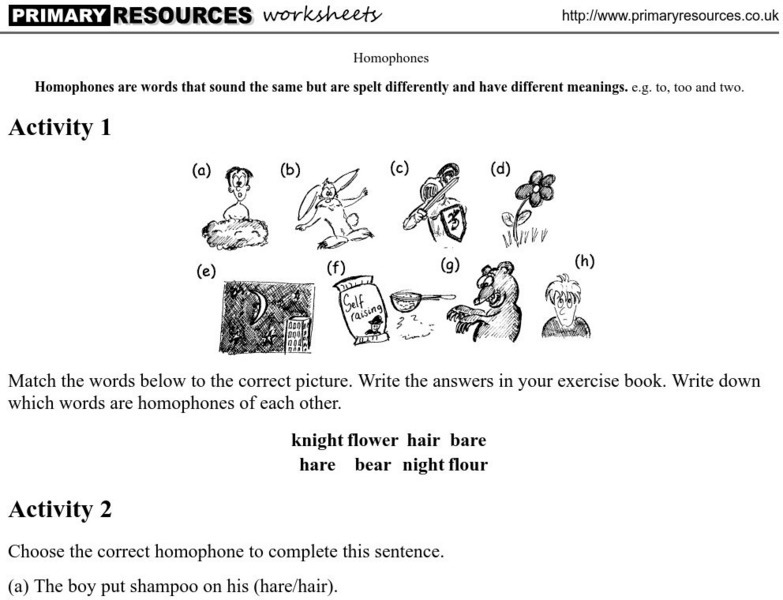Science Buddies
Science Buddies: The Bouba Kiki Effect
It may be possible for certain symbolic characteristics, like sharpness and roundedness, to cross language barriers. For this experiment you will investigate the Bouba-Kiki Effect to find out if abstract visual properties can be linked...
University of South Florida
Fcat Express: Probable Passage
Site provides extensive assistance in preparing 4th grade students for Florida Comprehensive Assessment Test. This section provides help in using the "probable passage" technique to aid comprehension. In addition, links are available to...
University of South Florida
Fcat Express: Semantic Feature Analysis
Site provides extensive assistance in preparing 4th grade students for Florida Comprehensive Assessment Test. This section on semantic features helps students recognize supporting details as they read.
Scholastic
Scholastic: Writing With Scientists
After students investigate a topic through research, hypothesizing, observing, and experimentating, teachers can use this lesson to help their students prepare short science reports and publish them online. The Writing with Scientists...
Education Place
Houghton Mifflin: Eduplace: Wacky Web Tales: The Weather Station
This fill-in-the-blank Wacky Web Tale includes a story about a weather station. It is fun and serves an interactive grammar review. Wacky Web Tales are fun and interactive grammar reviews. Students fill in blanks for different parts of...
University of South Florida
Fcat Reading Grade 4: Teaching Strategies
This is a great resource that concentrates strategies and student activities in one place in an easy to use format, and can be navigated easily. Find great examples of probable passage, selective underlining, and semantic feature...
University of South Florida
Fcat Express: Cause and Effect
Site provides extensive assistance in preparing 4th grade students for Florida Comprehensive Assessment Test. This section helps students identify cause and effect in literature.
Other
Newsela
[Free Registration/Login Required] Newsela offers new current events articles daily in areas ranging from the arts to war and peace. Each article is available at five different reading levels; grade level and word count are displayed for...
Google
Google for Education: Mystery Word X
An exercise for students to analyze the classification of nouns and verbs. They begin by considering nouns as a person, place, or thing, and verbs as action words. Students then study more specific uses of nouns and verbs and rethink...
TeachEngineering
Teach Engineering: Pingus Penguins: Writing Good Instructions
Students use the free computer game Pingus to learn how engineers, specifically environmental engineers, use their technical writing skills to give instructions and follow the instructions of others. Students learn to write instructions...
Read Works
Read Works: Passages: The Upside of Dyslexia
[Free Registration/Login Required] Students read a nonfiction text about dyslexia and the difficulties and successes it brings and answer questions about comprehension, supporting details, vocabulary, transitions, and more. The text is...
Education Development Center
Tv411: Reading: Parts of a Newspaper: Activity 2 of 3
This newspaper activity requires students to read eight headlines and then select what each would be about from the options given. When answers are submitted, an explanation is also given.
Education Development Center
Tv411: Reading: Parts of a Newspaper: Activity 3 of 3
This newspaper activity is to look at the pictures provided, read what the stories are about, and select captions that would fit both the stories and the pictures.
Texas Education Agency
Texas Gateway: Synthesize Ideas in Informational/expository Texts
[Accessible by TX Educators. Free Registration/Login Required] Learn how to synthesize and make logical connections between ideas within a text and across two or three texts representing similar or different genres (including literary...
Other
Freeology: Journal Topics
Encourage students to write in their journals with this extensive selection of journal topics.
Other
Reading Quest: Making Sense of Social Studies
Teaching students to read well in areas other than language arts requires teaching and reinforcing the kinds of reading strategies taught here. There are 27 strategies, ranging from brainstorming to word mapping. The site includes PDF...
Other
Wisewire: Grade 3 Playlist: Identifying Real Life Connections Between Words
Often, without even realizing it, readers are connecting the words they read to their everyday lives. The human brain is moving so fast that even while reading, behind the scenes, readers are making connections to their real lives and to...
Other
Educator Voices: Grade 3 Research Skills Unit
Describes the process teachers went through to create a lesson unit where students first brainstormed what it means to do research, then were tasked with choosing a topic, researching it, and presenting on it several days later. The...
SMART Technologies
Smart: Web Resources for 3 5 Reading and Language Intervention
Tons of online resources for reading and language skills compiled nicely into a student-friendly SMART Notebook file.
Writing Fix
Writing Fix: Special Place Poems
In this lesson students will develop a poem while thinking about a special place. They will develop their ideas using strong word choice and figurative language. After the students have completed their ideas, they will be linked together...
Writing Fix
Writing Fix: The Wacky Advertisement (With Disclaimer) Activity
Inspired by Barry Lane's book 51 Wacky We-Search Reports, in this cross-curricular lesson students learn how to summarize properly.
Primary Resources
Primary Resources: Homophone Site
Check out this informative site featuring homophones. Students will enjoy the illustrations and activities found within this resource.
Other
Kid Bibs: Effective Use of Textbook Features
Here, parents and teachers can find tips for helping young readers understand the expository writing found in textbooks.
ReadWriteThink
Read Write Think: Nonfiction Pyramid
A printable pyramid for use with nonfiction texts while students identify the main ideas and supporting details within a text. Students also determine author's purpose and key vocabulary words. Directions on how to use this type of...





